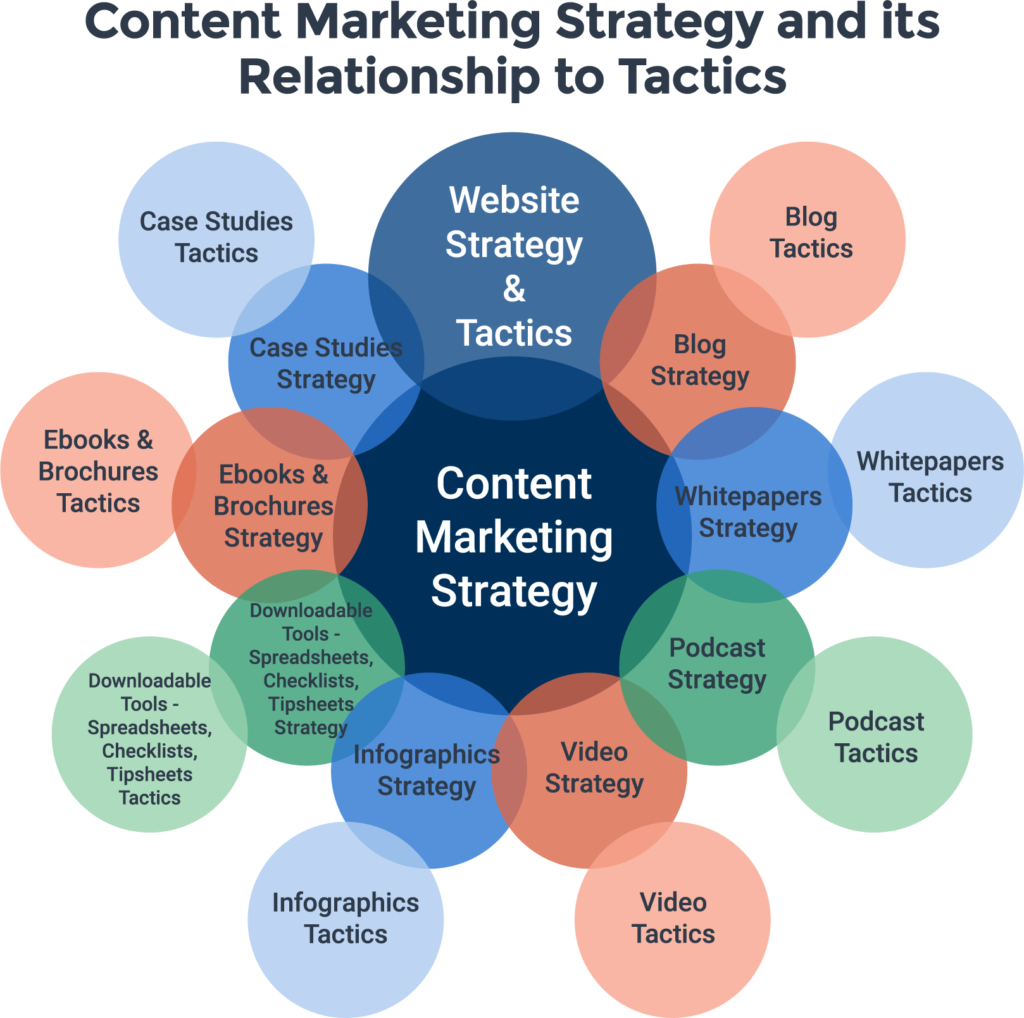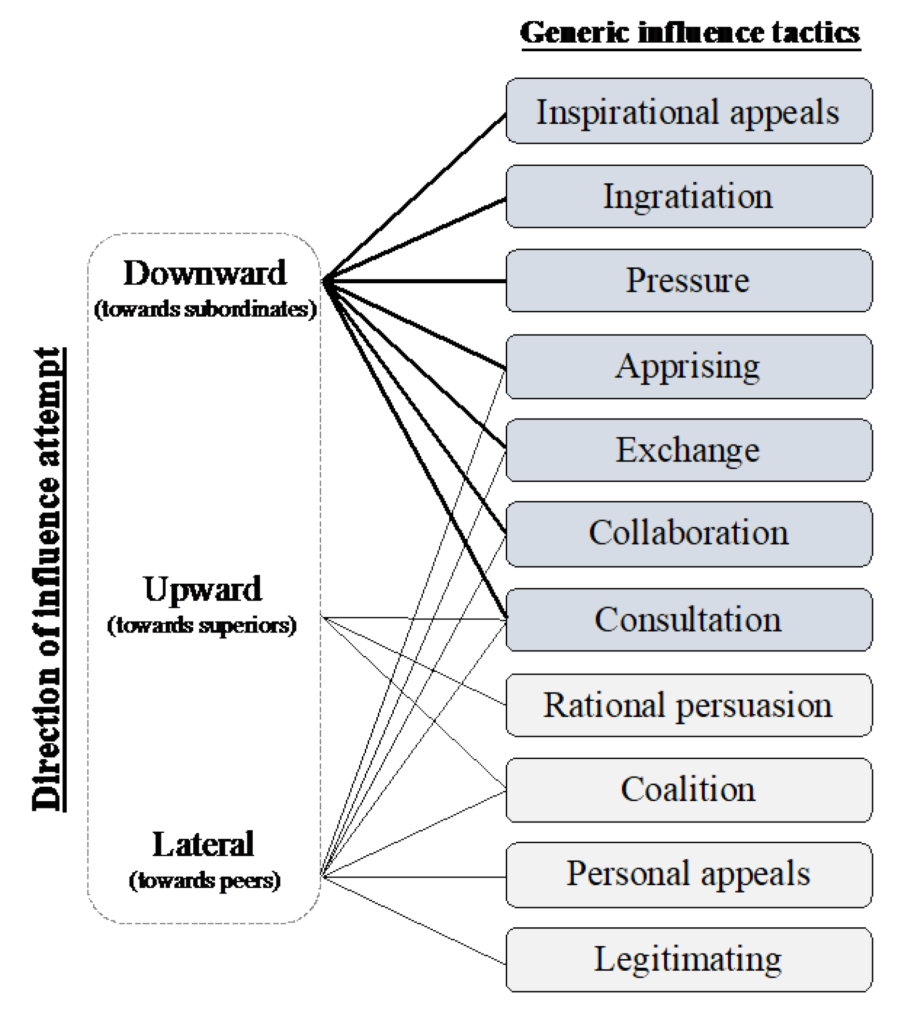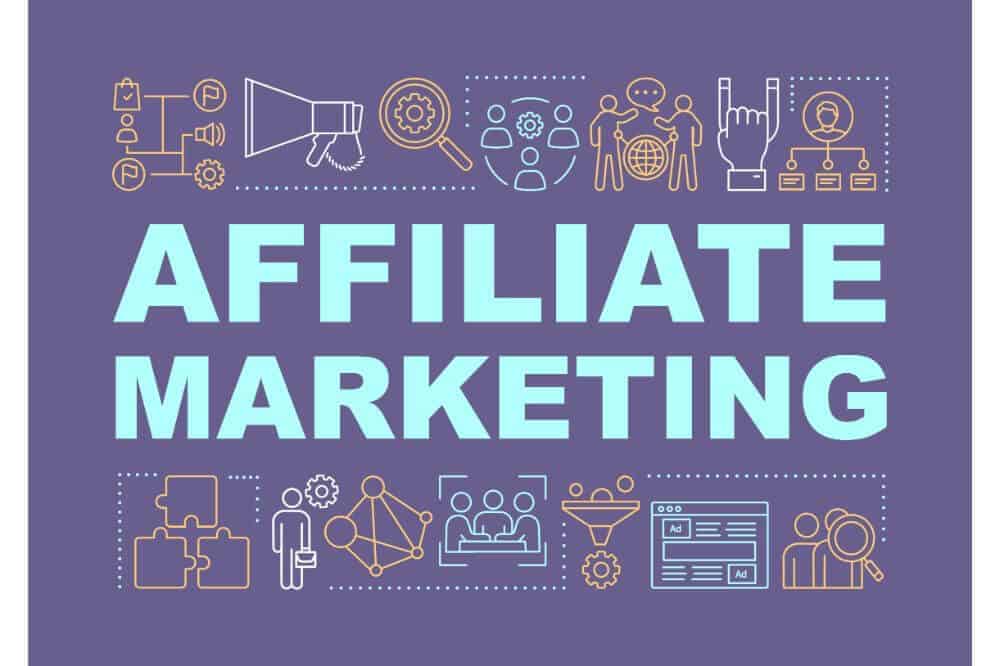Digital marketing tactics
Digital marketing is the practice of promoting products or services using digital channels such as search engines, social media, email, and websites. In today’s digital age, businesses of all sizes are leveraging various digital marketing tactics to reach and engage with their target audience. Here are some of the most common digital marketing tactics that businesses use:
- Search engine optimization (SEO): SEO is the process of optimizing your website to rank higher in search engine results pages (SERPs) for relevant keywords. SEO involves both on-page and off-page optimization techniques, such as keyword research, content creation, link building, and technical SEO.
- Pay-per-click (PPC) advertising: PPC advertising involves placing ads on search engine results pages or other websites, and paying a fee each time someone clicks on your ad. The most popular PPC platform is Google Ads, which allows businesses to create ads and target specific keywords, demographics, and locations.
- Social media marketing: Social media platforms such as Facebook, Instagram, Twitter, and LinkedIn are powerful tools for businesses to engage with their target audience. Social media marketing involves creating and sharing content, running ads, and engaging with followers to build brand awareness and drive traffic to your website.
- Content marketing: Content marketing involves creating and sharing valuable and relevant content, such as blog posts, infographics, videos, and eBooks, to attract and retain a clearly defined audience. The goal of content marketing is to drive profitable customer action, such as website visits, lead generation, and sales.
digital marketing tactics more types
- Email marketing: Email marketing is a cost-effective way to reach your target audience and promote your products or services. Email marketing involves sending promotional emails, newsletters, and other types of content to subscribers who have opted in to receive your communications.
- Influencer marketing: Influencer marketing involves partnering with social media influencers, bloggers, or other individuals with a large following to promote your products or services. Influencer marketing can help businesses reach a wider audience and build trust with their target audience.
- Affiliate marketing: Affiliate marketing involves partnering with other businesses or individuals to promote your products or services in exchange for a commission. Affiliates promote your products or services to their audience, and you pay them a percentage of each sale that they generate.
| Digital Marketing Tactic | Definition |
|---|---|
| Search Engine Optimization (SEO) | The process of optimizing your website to rank higher in search engine results pages (SERPs) for relevant keywords. |
| Pay-per-click (PPC) Advertising | Placing ads on search engine results pages or other websites and paying a fee each time someone clicks on your ad. |
| Social Media Marketing | Engaging with your target audience on social media platforms such as Facebook, Instagram, Twitter, and LinkedIn. |
| Content Marketing | Creating and sharing valuable and relevant content, such as blog posts, infographics, videos, and eBooks, to attract and retain a clearly defined audience. |
| Email Marketing | Sending promotional emails, newsletters, and other types of content to subscribers who have opted in to receive your communications. |
| Influencer Marketing | Partnering with social media influencers, bloggers, or other individuals with a large following to promote your products or services. |
| Affiliate Marketing | Partnering with other businesses or individuals to promote your products or services in exchange for a commission. |
Top 8 Conversion tactics for your eCommerce store- From Homepage to Product Page
Search engine optimization tactics
Search engine optimization (SEO) is the process of optimizing your website to rank higher in search engine results pages (SERPs) for relevant keywords. Here are some common SEO tactics that businesses use:
- Keyword research: Keyword research is the process of identifying relevant keywords that your target audience is searching for. Use tools such as Google Keyword Planner or SEMrush to identify high-volume, low-competition keywords that you can target.
- On-page optimization: On-page optimization involves optimizing the content on your website to align with your target keywords. This includes optimizing your meta titles and descriptions, header tags, and URL structure.
- Content creation: Creating high-quality, relevant content is key to improving your search engine rankings. Focus on creating content that answers your audience’s questions and provides value.
SEO tactics more types
- Link building: Link building involves acquiring high-quality backlinks from other websites to improve your website’s authority and ranking. Reach out to other websites in your industry and offer to guest post or collaborate on content.
- Technical SEO: Technical SEO involves optimizing your website’s technical structure to improve its usability, speed, and crawlability. This includes optimizing your website’s mobile responsiveness, URL structure, and page load speed.
- Local SEO: If you have a local business, optimizing for local search is essential. This includes creating a Google My Business profile, optimizing your website for local keywords, and acquiring local citations.
- Monitoring and analytics: It is important to regularly monitor your search engine rankings and track your website’s traffic and engagement using tools such as Google Analytics. This can help you identify opportunities for improvement and refine your SEO strategy.

Pay-per-click tactics
Pay-per-click (PPC) advertising is a digital advertising model in which businesses place ads on search engine results pages or other websites and pay a fee each time someone clicks on their ad. Here are some common PPC tactics that businesses use:
- Keyword research: Similar to SEO, keyword research is crucial for PPC advertising. Identify relevant keywords that your target audience is searching for and create ads that align with those keywords.
- Ad creation: Create compelling ads that include a strong call-to-action and align with your target keywords. Include ad extensions such as sitelinks or callout extensions to improve your ad’s visibility and click-through rate.
- Landing page optimization: Once someone clicks on your ad, they should be directed to a landing page that aligns with the ad’s messaging and offers a clear call-to-action. Optimize your landing pages to improve conversions and reduce bounce rates.
pay per click tactics more types
- Targeting options: PPC advertising offers various targeting options, such as geographic targeting, demographic targeting, and behavioral targeting. Use these options to reach your ideal audience.
- Ad scheduling: Adjust your ad scheduling to target your audience at the most optimal times. Use data from previous campaigns to determine the best days and times to run your ads.
- Bid management: Set bids for your ads to ensure that they appear at the top of search engine results pages. Continuously monitor and adjust your bids based on ad performance and budget.
- Performance monitoring: Monitor your ad’s performance using tools such as Google Ads or Bing Ads. Track your ad’s click-through rate, conversion rate, and cost-per-click to optimize your campaigns for better performance.

Social media marketing tactics
Social media marketing involves engaging with your target audience on social media platforms such as Facebook, Instagram, Twitter, LinkedIn, and more. Here are some common social media marketing tactics that businesses use:
- Creating a social media strategy: A social media strategy outlines your goals, target audience, content plan, and metrics for success. It is important to have a clear strategy in place to ensure that your social media efforts align with your business objectives.
- Content creation: Social media platforms thrive on visual content such as images, videos, and infographics. It is important to create high-quality content that resonates with your target audience.
- Engaging with your followers: Social media is a two-way communication channel. Engage with your followers by responding to their comments, asking for feedback, and encouraging them to share their experiences.
social media marketing more types
- Running social media ads: Social media advertising allows businesses to reach a wider audience and target specific demographics and interests. You can create ads that promote your products, services, or brand.
- Influencer partnerships: Partnering with social media influencers can help you reach a wider audience and build trust with your target audience. Identify influencers who align with your brand values and have a significant following in your industry.
- Hosting social media contests: Social media contests can increase engagement and drive traffic to your website. Encourage followers to participate by offering prizes and incentives.
- Using social listening tools: Social listening tools allow you to monitor social media conversations and track mentions of your brand or industry. This can help you identify opportunities for engagement and address any negative feedback.

Content marketing tactics
Content marketing is the process of creating and sharing valuable, relevant, and consistent content to attract and retain a clearly defined audience and ultimately drive profitable customer action. Here are some common content marketing tactics that businesses use:
- Content strategy: Develop a content strategy that aligns with your business objectives and target audience. Identify the types of content you will create (e.g. blog posts, videos, infographics) and the channels you will use to distribute that content.
- Content creation: Create high-quality, relevant content that provides value to your target audience. Focus on creating content that educates, entertains, or solves problems for your audience.
- Content distribution: Distribute your content through various channels, such as your website, social media, email marketing, and guest posting on other websites. Use analytics to identify which channels are driving the most traffic and engagement.
content marketing tactics more types
- Search engine optimization (SEO): Optimize your content for search engines by including relevant keywords in your content, meta titles, and descriptions. This can help improve your search engine rankings and drive more organic traffic to your website.
- Email marketing: Use email marketing to distribute your content to your email subscribers. Create email newsletters or automated campaigns to keep your audience engaged.
- Influencer partnerships: Partner with influencers in your industry to promote your content and reach a wider audience. Identify influencers who align with your brand values and have a significant following in your industry.
- Content promotion: Promote your content through paid channels such as social media ads, PPC advertising, or sponsored content. This can help increase your content’s visibility and drive more traffic to your website.

Email marketing tactics
Email marketing is a digital marketing tactic that involves sending emails to a list of subscribers in order to promote products or services, build relationships, and drive customer action. Here are some common email marketing tactics that businesses use:
- Email list building: Build a targeted email list by offering lead magnets, such as ebooks or free trials, in exchange for email addresses. Use pop-up forms, landing pages, and social media to encourage sign-ups.
- Segmentation: Segment your email list based on factors such as demographics, behavior, and interests. This allows you to send more targeted and personalized emails that resonate with your subscribers.
- Email automation: Use email automation to send triggered emails, such as welcome emails or abandoned cart emails, based on specific actions taken by subscribers.
email marketing tactics more types
- Personalization: Use personalization to make your emails more relevant and engaging. Address subscribers by name, use dynamic content to tailor the email to their interests, and segment your list to send more targeted content.
- Email design: Use a visually appealing email design that is optimized for mobile devices. Include clear calls-to-action and a compelling subject line to encourage opens and clicks.
- A/B testing: Test different elements of your email, such as subject lines, send times, and content, to identify what resonates best with your audience and improve your email performance.
- Analytics: Use analytics to track the performance of your email campaigns. Monitor metrics such as open rate, click-through rate, and conversion rate to optimize your campaigns for better results.

Influencer Marketing tactics
Influencer marketing is a digital marketing tactic that involves partnering with individuals who have a strong following on social media platforms to promote products or services. Here are some common influencer marketing tactics that businesses use:
- Identify influencers: Identify influencers who align with your brand values and have a significant following in your industry. Use tools such as BuzzSumo or Followerwonk to find influencers in your niche.
- Partner with influencers: Reach out to influencers and offer to partner with them on a campaign. Negotiate compensation and create a clear agreement outlining deliverables and expectations.
- Content creation: Work with influencers to create high-quality, engaging content that promotes your brand. This could include sponsored posts, product reviews, or social media shoutouts.
more types of influencer marketing tactics
- Micro-influencers: Consider working with micro-influencers, who have smaller but highly engaged audiences. They may be more cost-effective and may have a more targeted audience that aligns with your brand.
- Affiliate marketing: Offer influencers an affiliate program where they receive a commission for each sale they generate through their unique affiliate link.
- Influencer events: Host events or experiences that feature your product or service and invite influencers to attend. This can help build relationships and create content that promotes your brand.
- Analytics: Use analytics to track the performance of your influencer campaigns. Monitor metrics such as engagement rate, reach, and conversion rate to optimize your campaigns for better results.

Affiliate Marketing tactics
Affiliate marketing is a digital marketing tactic that involves partnering with affiliates who promote your products or services in exchange for a commission on sales. Here are some common affiliate marketing tactics that businesses use:
- Choose an affiliate network: Choose an affiliate network such as Amazon Associates, ShareASale, or Commission Junction to help you find and manage affiliates.
- Find relevant affiliates: Find affiliates who have a strong following in your industry and whose audience aligns with your target market. Use social media, influencer databases, and affiliate networks to find potential affiliates.
- Create an affiliate program: Create an affiliate program that outlines your commission structure, payment terms, and promotional guidelines. Provide your affiliates with creative assets such as banners, images, and product descriptions.
more types of affiliate marketing tactics
- Offer incentives: Offer your affiliates incentives such as bonus commissions or exclusive promotions to motivate them to promote your products or services.
- Monitor performance: Monitor the performance of your affiliate program using analytics such as clicks, conversions, and revenue. Use this data to optimize your program and improve your ROI.
- Build relationships: Build relationships with your affiliates by communicating regularly, providing them with support and resources, and recognizing their efforts.
- Compliance: Ensure that your affiliate program complies with applicable laws and regulations such as the Federal Trade Commission guidelines for disclosure.

Amazon Marketing: 7 Major Keys to Building the Perfect Strategy for Your Business



